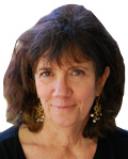
Anxiety
How I Learned Not to Take My Panic Attacks Personally
10 things I learned about myself when I wrote a self-help book
Posted April 30, 2012
The first time I spotted my memoir in the self-help section of a bookstore, I was taken aback. I’d meditated my way out of a panic disorder. But weren’t the people in this category required to be doctors or - at the very least - people with advanced degrees? Hadn’t they all developed theories, ten-step programs, self-hypnosis tapes, podcasts, videos and huge followings on twitter, facebook, television and radio?
“I’m just a Jewish girl from Rhode Island,” I told my childhood friend Meredith Vieira recently when we discussed my experience healing from the overwhelming anxiety I’d battled for decades.
I had no idea that the healing regimen I’d concocted would actually work. But the therapists, teachers, mystics, monks and healers I met worked wonders, helping me mend my frayed nerves and rewire my anxious brain.
Here’s a list of the ten things I learned about myself when I wrote a self-help book.
1. I’m not alone in my suffering
For decades I thought no one else had a defective central nervous system that erupted out of the blue. Now I know that 6 million Americans suffer from a panic disorder, 40 million from an anxiety disorder. Readers have contacted me, movingly describing their own battles with anxiety. If each of us could help one other person feel less alone and more empowered, imagine how much less suffering there would be in the world.
2. I’m capable of sitting still
Every time I panicked, my heart pounded, my lungs galloped, my hands shook and my body trembled. But Yongey MIngyur Rinpoche, a monk who’d suffered panic attacks himself, taught me not to judge myself harshly. “Good meditation is okay, bad meditation is okay,” he assured me. “Just try your best to meditate.” I started off squirming, with a wandering mind but an open heart. I now love meditating every single day.
3. My anxiety masked a lot of sadness
Once I was able to sit still, I was able to examine my past. Therapies like Somatic Experiencing and EMDR allowed me to process the disturbing physical symptoms of anxiety that had haunted me for decades, and access the sadness that had existed inside me from a young age, as I watched the people around me suffer with mental illness and unhappiness. The flip side of panic is often depression. I had to feel, accept, and understand that in order to heal.
4. I can be my own holistic physician
“Neurotic, heal thyself!” became my mantra, as I figured out that alcohol made me anxious, that caffeine and sugar made me nervous, and that restorative yoga, meditation, and eating well calmed me down. I learned which powerful therapies spoke to me, which activities comforted me, and that meditation always leads me to a better place.
5. Mental illness is not contagious; I can cultivate mental wellness
The mental illness I saw around me as a child frightened me. But the demons that haunted many of my family members were less threatening to me once I learned that unhappiness, suffering and sadness are part of life for every human being. Cultivating happiness is hard work, but an essential component to healing and thriving.
6. It's not selfish for me to seek happiness
Sharon Salzberg and Sylvia Boorstein, two wise Buddhist teachers, taught me lovingkindness meditation. “May I be safe,” I whispered to myself. “May I be happy, may I be healthy, may I live with ease.” Then I wished the same for others, including loved ones and strangers. Cultivating compassion is my daily practice now. But I can only do that by understanding my own suffering, and the lessons I’ve learned about how to achieve happiness, wholeness and peace.
7. My family history is not my entire history
I’ve come to understand my past in a new way. I haven’t walked away from it, but I’ve sat with it long enough so that it’s become just that – my past. I have compassion for the suffering others around me endured, but live in the present much more successfully now, thanks to my meditation practice, where I try to take life one moment at a time.
8. I’m stronger than I thought I was
Belleruth Naparstek, a psychologist and guided imagery specialist, taught me that “Panic is essentially an overactive survival response,” and I now view myself as a true survivor. I’ve learned techniques that help me to self-regulate. I feel confident, less frightened, and empowered. I can calm myself down, knowing that life will throw me curveballs and that my nerves will rev themselves up again. But the healing tools I’ve learned will always be effective.
9. I can be a teacher as well as a student
I’m constantly learning more about the roots of anxiety and healing modalities. Readers have thanked me for sharing my story and shared their own healing resources. I once heard Sylvia Boorstein say “Sometimes I think of this planet as a flying hospital.” Life can be difficult and painful, but I believe that we are all patients, doctors and nurses. One of my favorite Buddhist teachings says “May I be the doctor, the medicine, and may I be the nurse for all sick beings in the world until everyone is healed…”
10. Everything is not about me
Hooray! Writing a self-help book has made me realize that what I’ve experienced is not all that unique. I’ve felt alone and isolated, but now I feel humbled and connected to the universe. My suffering is not as unique or exotic as I once imagined it to be. I’m just one more person on the planet trying to live a happy life and help others. I just happened to write a book along the way.
Priscilla Warner's memoir, "Learning to Breathe -- My Yearlong Quest to Bring Calm to My Life", is now available in paperback. Follow her on Twitter on Facebook or on her website.



